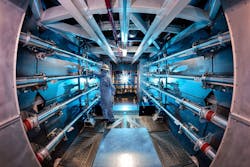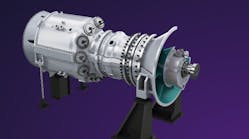We have Fusion Ignition: Lawrence Livermore team details huge step forward in Nuclear Energy experiments
Nuclear fusion has been a sort of holy grail for energy researchers for decades.
It offers promises and tremendous energy density and efficiency, if ever harnessed. To paraphrase Doc Ock in Spiderman, “the carbon-free power of the sun in the palm of our hand,” although it’s actually at the business end of a super laser.
Those dreams took an important step closer to reality recently with experiments achieving fusion ignition at the Lawrence Livermore National Laboratory in California, according to the U.S. Department of Energy. Little more than a week ago, an LLNL team conducted what is called the first controlled fusion experiment to reach this milestone, “also known as scientific energy breakeven, meaning it produced more energy from fusion than the laser energy used to drive it.”
The promise of nuclear fusion has been pursued by researchers for years, including the multi-national International Thermonuclear Experimental Reactor megaproject planned to be completed in France by 2025. The ITER’s reactor hopes to use 300 MW of electricity to infuse elemental plasma (such as superheated hydrogen) to create about 500 MW of heat for periods up to 10 minutes.
Fusing atoms together, in theory, would release a multi-fold level of energy beyond other resources, without generating the radioactive nuclear waste of fission, which is used now in nuclear power plants. It also could boost thermal power efforts to provide baseload energy while meeting global climate goals.
“We have had a theoretical understanding of fusion for over a century, but the journey from knowing to doing can be long and arduous,” Dr. Arati Prabhakar, President Biden’s chief adviser for science and technology and director of the White House Office of Science and Technology Policy, said in a statement. “Today’s milestone shows what we can do with perseverance.”
The National Ignition Facilities team at the Livermore National Lab has been working on experiments around nuclear fusion for years. In 2021, the group announced a significant step with an experiment yielding 1.3 megajoules (MJ), lifting the program to the doorstep of fusion ignition.
This time around, on December 5, the LLNL team surpassed the fusion threshold by achieving 3.15 MJ of fusion energy output with only 2.05 MJ delivered to the plasma target. This offers a foundation science basis for inertial fusion energy and net energy gain.
“The pursuit of fusion ignition in the laboratory is one of the most significant scientific challenges ever tackled by humanity, and achieving it is a triumph of science, engineering, and most of all, people,” LLNL Director Dr. Kim Budil said. “Crossing this threshold is the vision that has driven 60 years of dedicated pursuit—a continual process of learning, building, expanding knowledge and capability, and then finding ways to overcome the new challenges that emerged. These are the problems that the U.S. national laboratories were created to solve.”
All will agree there is still a long ways to go before nuclear fusion is scaled for utility energy solutions. This energy output of just over 3 megajoules is only one percent of the 300+ MJ required from the grid to power the massive laser systems at the Ignition facility, according to a report on the Physics Today website quoting longtime Livermore engineers and leaders.
Nonetheless, the Livermore National Lab has aimed for this moment since developing a 1960s hypothesis that lasers could be used to induce fusion. Pioneering physicist John Nuckolls led teams into research and development in lasers, optics, diagnostics, target fabrication, computer modeling and design, according to the DOE.
By this month, the lab had built the National Ignition Facility’s biggest and most intense laser system yet. The NIF is the size of a sports stadium and uses beams to create temperature and pressure such as those within the sun, other stars and giant plants.
- -- --
(Rod Walton, senior editor for EnergyTech, is a 14-year veteran of covering the energy industry both as a newspaper and trade journalist. He can be reached at [email protected]).
Follow us on Twitter @EnergyTechNews and @rodwaltonelp and on LinkedIn





